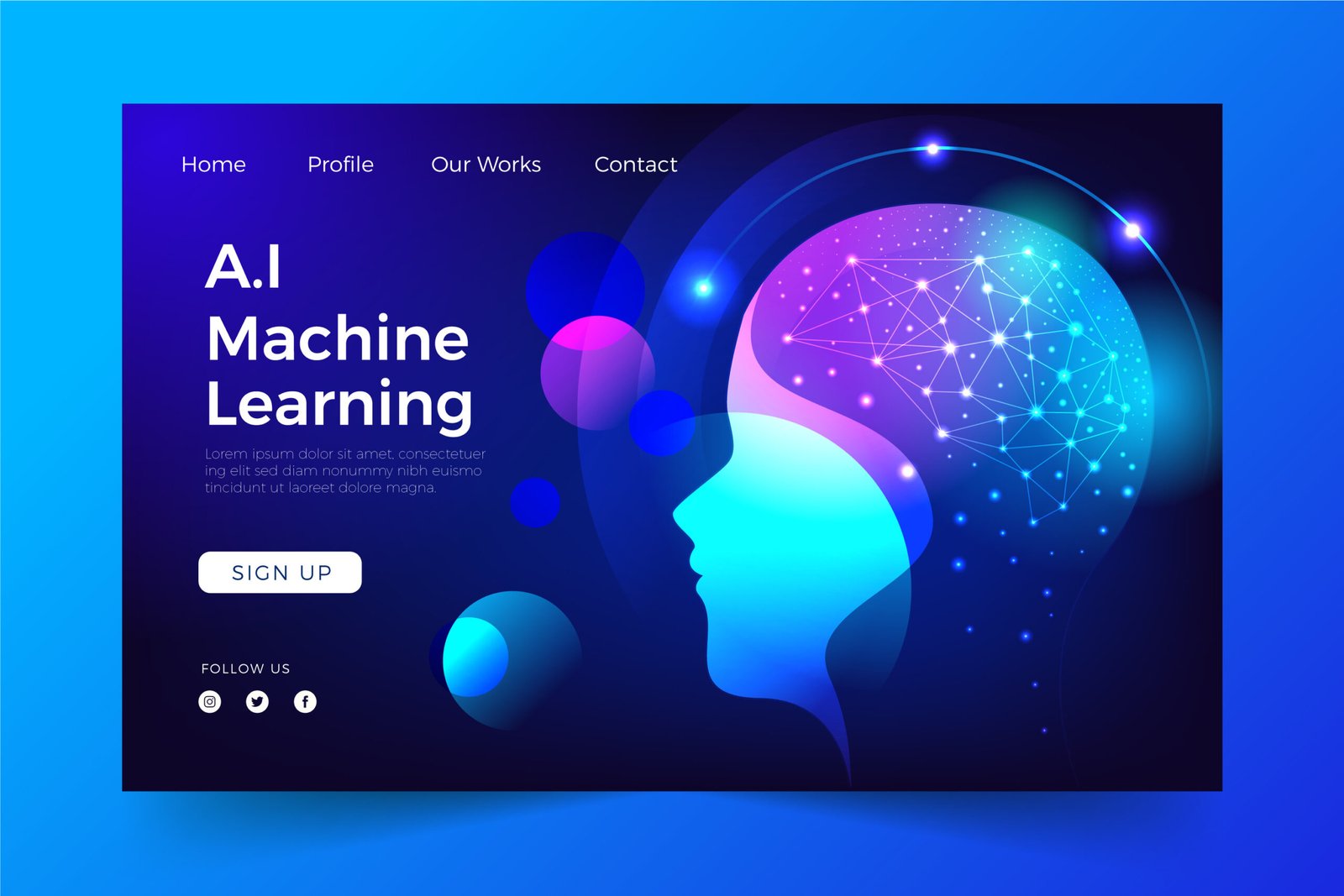Table of Contents
- Understanding the B2B Audience
- Setting Clear Goals and Objectives
- Creating High-Quality, Value-Driven Content
- Leveraging SEO and Keyword Research
- Utilizing Multi-Channel Distribution Strategies
- Incorporating Data and Analytics for Improvement
- Building Relationships Through Engagement
- Collaborating with Industry Influencers
- Continuous Learning and Adaptation
Understanding the B2B Audience
To successfully engage in B2B content marketing, it is essential to have a comprehensive understanding of the unique characteristics and needs of the B2B audience. Unlike individual consumers, business audiences typically consist of multiple stakeholders involved in the purchasing decision, including executives, managers, and technical staff. This distinction necessitates a nuanced approach to content strategy, acknowledging the diverse roles and varying knowledge levels of these stakeholders.
One of the foremost challenges in reaching a B2B audience is recognizing their specific pain points and the complexities of their purchasing behaviors. Businesses can gather valuable data through various channels including surveys, interviews, and analytics tools. By collecting information on their target market, organizations can identify trends, preferences, and common challenges faced by potential clients. This data-driven approach enables marketers to craft relevant content that speaks directly to the concerns of their audience.
Creating detailed buyer personas is a highly effective method for enhancing understanding of the B2B market. Buyer personas are semi-fictional representations of the ideal customer, based on real data and some educated speculation. They encompass factors such as demographics, industry, job roles, and specific needs. By developing these personas, businesses can tailor their content to resonate with specific segments of their audience, thereby increasing engagement and effectiveness. Additionally, analyzing competitors can provide insight into gaps in the market that can be addressed through unique content offerings.
Ultimately, a thorough understanding of the B2B audience is pivotal for developing successful content marketing strategies. By focusing on the intricacies of the B2B buying journey and employing data-driven insights, organizations can create targeted content that meets the specific needs of their audience and drives meaningful engagement.
Setting Clear Goals and Objectives
Establishing clear goals and objectives is a fundamental aspect of effective B2B content marketing. Without a defined direction, businesses may find their content efforts scattershot, lacking the focus necessary to drive tangible results. The SMART criteria serve as a structured approach to goal-setting, ensuring that each objective meets the necessary standards: Specific, Measurable, Achievable, Relevant, and Time-bound. By employing this framework, businesses can develop precise goals that guide their content strategies.
Specificity in goal-setting prevents vagueness and confusion, allowing teams to understand exactly what they are aiming to achieve. For instance, instead of stating a goal as “increase website traffic,” a more specific objective could be “increase website traffic by 30% over the next six months.” Measurability follows, as it allows the assessment of progress through analytics tools and performance metrics. This facilitates data-driven adjustments as the campaign unfolds.
Achievability of goals is crucial; setting unrealistic expectations can lead to frustration and disillusionment. It is essential to consider available resources and current market conditions. Relevant goals ensure alignment with broader business objectives; for example, content aimed at enhancing brand awareness should support overall growth targets. Time-bound goals introduce a sense of urgency and provide a timeline for evaluation. A deadline can instigate motivation and help maintain focus on the desired outcomes.
When B2B companies align their content marketing goals with overall business objectives, they create a clear direction that fosters accountability. This alignment ensures that every piece of content developed serves a strategic purpose, contributing toward achieving business milestones. Therefore, setting clear, SMART goals is not just a best practice but a crucial step in enhancing the efficacy of B2B content marketing efforts.
Creating High-Quality, Value-Driven Content
In today’s competitive B2B landscape, the creation of high-quality content that delivers significant value to the audience is paramount. Businesses must prioritize the development of content that not only informs but also engages and educates their target audience. Various content types can be leveraged, including blogs, whitepapers, case studies, and videos, each of which serves a unique purpose in a comprehensive content strategy.
Blogs are a cornerstone of B2B content marketing, as they help establish authority and foster trust with prospective customers. Regularly publishing informative and insightful blog posts can address key industry challenges, thus attracting potential clients who seek solutions. Additionally, incorporating SEO strategies within blogs can enhance visibility and drive organic traffic, aligning with the broader goal of lead generation.
Whitepapers, on the other hand, provide in-depth analysis on specific topics and allow businesses to showcase their expertise. Tailored to educate the audience, whitepapers typically delve into complex issues and offer data-driven insights, making them invaluable resources for B2B professionals seeking to understand market trends or emerging technologies. Case studies also play a crucial role, as they illustrate real-world applications of a company’s solutions while demonstrating measurable results. These narratives not only serve as persuasive tools but also resonate well with potential customers by reflecting relatable challenges and success stories.
In addition to written content, incorporating videos can significantly enhance engagement. Educational videos, webinars, and tutorials allow for a dynamic presentation of information, catering to various audience learning preferences. When executed effectively, these rich media formats can drive engagement and improve retention of the information presented.
Ultimately, the focus on creating value-driven content tailored to the needs of the target B2B audience is essential. By prioritizing educational and informative content, businesses can foster stronger connections with their audience, ultimately leading to increased trust and conversion rates.

Leveraging SEO and Keyword Research
Search Engine Optimization (SEO) plays a crucial role in enhancing the visibility of B2B content. In a competitive marketplace, businesses must adopt effective SEO strategies to ensure their content reaches the right audience. One of the foundational elements of SEO is keyword research, which involves identifying the terms and phrases that potential customers use when searching for products or services. By understanding these keywords, businesses can tailor their content to address the specific needs and queries of their audience, thereby increasing engagement and driving organic traffic.
On-page optimization is another critical aspect of leveraging SEO for B2B content marketing. This involves refining various elements within the content itself to improve its relevance and accessibility to search engines. Key components of on-page optimization include optimizing title tags, meta descriptions, header tags, and image alt text. Additionally, incorporating the target keywords naturally throughout the content helps search engines understand its context while ensuring it remains engaging for readers.
Creating high-quality, valuable content is essential for engaging the audience and improving search engine rankings. This can be achieved through a variety of formats, including blog posts, white papers, and case studies. Each piece of content should not only provide valuable insights but also focus on incorporating relevant keywords strategically. It is important to avoid keyword stuffing, as this can harm content readability and negatively impact SEO performance. Instead, using synonyms and related terms can enhance the natural flow of the content while still signaling its relevance to search engines.
In conclusion, employing effective SEO techniques and conducting thorough keyword research significantly contributes to the visibility and success of B2B content marketing efforts. By focusing on both content quality and optimization, businesses can enhance their chances of attracting organic traffic and generating meaningful engagement with their target audience.
Utilizing Multi-Channel Distribution Strategies
In the current landscape of B2B content marketing, leveraging multi-channel distribution strategies is crucial for reaching a broader audience and maximizing engagement. Utilizing various channels such as social media platforms, email marketing, and industry forums allows businesses to interact with potential clients on multiple fronts. Each platform has its unique characteristics and audience demographics, making it imperative to tailor content appropriately for each channel.
For instance, social media channels like LinkedIn offer a professional platform to share insights, articles, and case studies, while Facebook and Twitter can be used to share shorter, digestible content that drives traffic back to longer pieces. Email marketing remains one of the most effective channels for direct communication, allowing businesses to deliver customized content directly to their audience’s inbox. Tailoring content for email requires attention to subject lines, preview texts, and the layout to ensure high open and click-through rates.
Industry forums and niche community sites also provide invaluable opportunities for content distribution. Participating in conversations, answering questions, and sharing expertise not only helps in establishing authority but also fosters relationships within the industry. However, consistency in messaging is paramount across all platforms. While the content may vary in format, the core message and brand voice should remain cohesive to ensure that the audience recognizes and connects with the brand.
Furthermore, integrating analytics tools to monitor engagement across these channels is essential for refining strategies. By analyzing what resonates with the audience on different platforms, businesses can adapt their content and distribution methods, ensuring that efforts are not only widespread but also effective. Multi-channel distribution strategies are fundamental in today’s B2B content marketing approach, enabling companies to connect with their audience more meaningfully.
Incorporating Data and Analytics for Improvement
In the rapidly evolving landscape of B2B content marketing, utilizing data and analytics is paramount for measuring success and driving strategic improvements. The ability to accurately assess the performance of marketing efforts hinges on identifying and monitoring key performance indicators (KPIs). Essential metrics such as engagement rates, conversion rates, and lead generation significantly influence the efficacy of content strategies.
Engagement metrics encompass a range of behaviors that signal how prospects and customers interact with content. These may include page views, social media shares, time spent on the page, and comments. By analyzing these metrics, marketers can discern which content resonates most effectively with their audience. For instance, high engagement on blog posts might suggest a need to create more in-depth articles or similar content types, thereby tailoring strategies to audience preferences.
Conversion rates represent another crucial KPI, as they reflect the effectiveness of content in persuading audiences to take desired actions, such as signing up for newsletters or requesting demos. Tracking conversion metrics helps organizations identify high-performing content while revealing areas that require optimization. For example, if certain calls-to-action underperform, it may be beneficial to revise the messaging or placement to enhance visibility and engagement.
Lead generation is a pivotal outcome of successful B2B content marketing. Effective measurement of leads generated through specific campaigns allows for informed decision-making regarding budget allocation and content creation. By utilizing marketing analytics tools, marketers can gather insights into which channels and content types yield the most leads, refining their strategies for more targeted outreach in the future.
Employing data analytics in conjunction with these KPIs enables B2B marketers to make informed decisions, ultimately enhancing content marketing effectiveness and improving return on investment. Through ongoing measurement and analysis, companies can continuously adapt their strategies to better meet the needs and interests of their target audiences.
Building Relationships Through Engagement
Engagement serves as a pivotal aspect of B2B content marketing, where establishing strong relationships with both prospects and existing customers is crucial. By fostering meaningful interactions, businesses can enhance customer loyalty and build trust over time. One effective approach is the creation of interactive content, such as quizzes, polls, and surveys, that not only attracts but also retains audience attention. Such content invites participation, making prospects feel valued and involved, which is essential in a competitive marketplace.
Additionally, managing comments and responding to questions on blog posts fosters a two-way dialogue, demonstrating that a brand values its customers’ input. This interaction allows businesses to address concerns promptly and receive direct feedback on their content, which can be invaluable for future marketing strategies. Regular engagement through replies can enhance customer satisfaction and foster a community around the brand, encouraging customers to share their experiences and recommendations.
Social media platforms play a critical role in nurturing these relationships through real-time conversations. Brands can utilize platforms such as LinkedIn and Twitter to engage directly with their audience, share valuable insights, and join relevant discussions. It is essential to post consistently and encourage dialogue by posing questions or sharing industry-related news that invites commentary. This continuous engagement not only keeps the audience well-informed but also positions the brand as a thought leader in the industry.
Finally, webinars offer a powerful way to engage and educate prospects while allowing for real-time interaction. These live events provide an opportunity to demonstrate expertise, share valuable knowledge, and connect personally with attendees. Businesses may bolster relationships by addressing participant questions during these sessions, showcasing their commitment to customer interests and concerns.
Collaborating with Industry Influencers
In the realm of B2B content marketing, collaborating with industry influencers can provide substantial advantages that enhance the visibility and credibility of your brand. These thought leaders often possess established audiences and foster trust within their respective niches, making them invaluable partners for extending your content reach. To maximize the benefits that can arise from these partnerships, it is paramount to identify influencers whose expertise aligns with your business objectives and audience’s interests.

The first step in this process involves conducting thorough research to pinpoint relevant influencers in your sector. Start by utilizing social media platforms and professional networks, such as LinkedIn, to discover industry leaders who demonstrate authority and engagement in similar topics. Make use of tools that analyze popularity metrics, audience demographics, and engagement rates to evaluate potential partnerships judiciously. By focusing on influencers who share a mutual ethos with your brand, you can create authentic collaborations that resonate with your target audience.
After identifying suitable influencers, the next phase is to build solid relationships with them. This can be achieved through personalized outreach, discussing shared interests, and offering value. When proposing partnership opportunities, be transparent about your goals and how collaboration can benefit both parties. Whether it involves co-creating content, hosting webinars, or securing guest posts, ensure that the partnership is mutually advantageous. The credibility and reach that these influencers bring can significantly amplify your content’s impact.
Finally, to leverage your collaboration effectively, develop a comprehensive plan that outlines the content distribution strategy across your channels and those of your influencer partners. Promoting joint initiatives via social media, newsletters, and blogs can enhance engagement and broaden your audience reach. By coupling your efforts with the influencer’s established trust, you position your content marketing strategy for greater success in the competitive B2B landscape.
Continuous Learning and Adaptation
In the rapidly evolving landscape of B2B content marketing, continuous learning and adaptation have become indispensable. As marketing trends shift, driven by advancements in technology and changing consumer behaviors, business marketers must stay informed to craft effective strategies. Engaging in consistent learning enables marketers to understand emerging trends and innovations that can enhance their content marketing efforts. Regularly revisiting training materials, attending industry conferences, and participating in webinars can provide valuable insights.
Moreover, consumer behavior is not static; it evolves alongside technological advancements and societal changes. For instance, the way businesses interact with consumers has transformed significantly due to the rise of digital platforms. Consequently, marketers must access analytics tools that monitor audience engagement and behavior to identify shifts in preferences. Utilizing these insights allows for the modification of content strategies, ensuring alignment with current needs and effectively addressing potential gaps.
Additionally, new marketing technologies such as artificial intelligence and marketing automation tools are reshaping how content is created, distributed, and measured. Familiarity with these innovations not only enhances operational efficiency but can also drive engagement by personalizing content and streamlining communication. Marketers should actively explore these technologies, integrating them into their B2B content marketing strategies to stay competitive in the marketplace.
Flexibility is essential in this environment. Marketers who possess a willingness to adapt their strategies to accommodate new findings and insights are more likely to succeed. Emphasizing a culture of innovation within teams, encouraging experimentation, and fostering an environment of open communication are essential leadership skills for navigating changes effectively. By adopting a mindset geared towards continuous learning and adaptation, B2B marketers will position themselves to respond proactively to market dynamics, driving sustainable growth and engagement.





